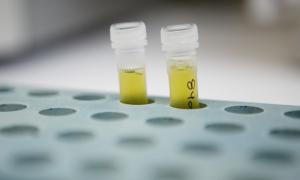Preliminary studies suggest that not all individuals who test positive for SARS-CoV-2 antibodies are immunized against the virus

Initial evidences suggest that the 44% of people with mild or asymptomatic infection have very low antibody levels with little neutralizing capacity | According to these results, a positive antibody test may not guarantee protection against SARS-CoV-2
The first tests performed with plasma from people who have been exposed to SARS-CoV-2 and have generated neutralizing antibodies against the virus suggest that 44% of people who have been mildly or asymptomatically infected have a very low level of neutralizing antibodies, and half of these have no neutralizing activity, indicating that they may not be protected against a second infection. This trend is reversed in people who have had severe disease, who have up to 10 times more antibodies than individuals with mild infection. In view of this fact, scientists emphasize the need to maintain hygiene and social distancing measures, as the presence of antibodies may not guarantee immunity to the coronavirus.
These are preliminary data from the consortium formed by the IrsiCaixa AIDS Research Institute together with the Animal Health Research Center (IRTA-CReSA) of the Institute for Agri-Food Technology and Research (IRTA) and the Barcelona Supercomputing Center (BSC), with the support of the pharmaceutical company Grifols.
To date, researchers have analysed data from a set of 111 plasma samples from people who have generated antibodies against SARS-CoV-2 and who experienced varying degrees of severity of the disease. Those experiments have been performed at the CReSA High Level Biosafety laboratories with the team led by Júlia Vergara-Alert and Joaquim Segalés, who is also a UAB Professor. According to the results, 44% of the 29 individuals who had a mild infection now have antibody levels below the reliable detection limit. Among them, half show no neutralizing activity and are, from this point of view, indistinguishable from non-infected controls. The remaining 56% have generated antibodies above the detection threshold. "We will have to study the basis for these differences, but in the meantime these results indicate that a positive result in a test does not guarantee immunity against the virus", warns Julià Blanco, researcher at IrsiCaixa and the Germans Trias i Pujol Research Institute, who is leading the research project for a vaccine against SARS-CoV-2 from IrsiCaixa.
Ten days to generate an immune response
In the case of people who had been hospitalised, they generated approximately 10 times more neutralising antibodies than those who had a mild clinical course. "This is probably because their immune system has been exposed to a higher amount of virus and this has caused a more aggressive reaction," says Blanco. The researchers have also noted that in hospitalized people the response was generated approximately 10 days after the onset of symptoms.
As a result, the scientists warn that the presence of antibodies by itself may not guarantee immunity to a second infection, and insist on the need for everyone to maintain basic precautions: hand hygiene, mask use and social distancing.
The researchers also note that, for people who passed through the infection with mild symptoms, the lack of antibodies may suggest that other immunological factors have successfully controlled the replication of the virus. First, innate immunity, which is the generic, non-specific immune response against a particular pathogen and is not long-term. And secondly, cellular immunity, which is carried out by T-lymphocytes and can destroy pathogens residing inside cells, where antibodies cannot reach. "It is necessary to continue investigating, but even if it is proven that the control of the first infection was achieved thanks to these factors, we do not know if they will be equally effective in the case of a second exposure to the virus", warns Bonaventura Clotet, director of IrsiCaixa.